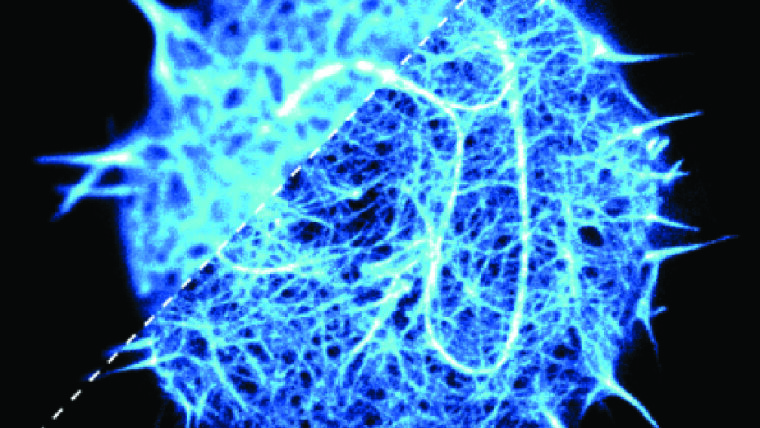
To better understand living matter such as cells and therefore to better treat diseases, we need to understand how molecules and cells interact with each other. Importantly, we need to understand the physics behind it, i.e. the biophysics. For this, scientists rely on highly sensitive and non-invasive analysis techniques, including far-field fluorescence microscopy. The aim of our Superresolution Microscopy Group is providing optimized observation techniques to in more detail understand molecular and cellular interactions especially on membranes. To do so we need to learn about the shortcomings of existing techniques and how to overcome them. The group is doing so through several collaborative cell-biological and biomedical research projects.
-
Eggeling, Christian, Univ.-Prof. Dr Superresolution Microscopy
Room E005
Helmholtzweg 4
07743 Jena -
Heisler, Ulrike Superresolution Microscopy
Room 003
Philosophenweg 7
07743 Jena -
Paez Larios, Francisco Superresolution Microscopy
Room E002
Philosophenweg 7
07743 Jena -
Schröder, Daniel Superresolution Microscopy
Room 002
Philosophenweg 7
07743 Jena -
Then, Patrick, Dr Superresolution Microscopy
Room E003
Philosophenweg 7
07743 Jena -
Trautmann, Julius Klaus Roland Superresolution Microscopy
Room E022
Helmholtzweg 4
07743 Jena -
Vogler, Bela Tristan Leander Superresolution Microscopy
Room 323.1
Albert-Einstein-Straße 9
07745 Jena -
Wichmann, Christina Superresolution Microscopy
Room E002
Helmholtzweg 4
07743 Jena -
Zhurgenbayeva, Gaukhar Superresolution Microscopy
Room E002
Philosophenweg 7
07743 Jena
Contact
Zentrum für Angewandte Forschung
Philosophenweg 7
07743 Jena
Google Maps site planExternal link
Postal address:
Friedrich-Schiller-Universität Jena
Institut für Angewandte Optik und Biophysik
Max-Wien-Platz 1
07743 Jena